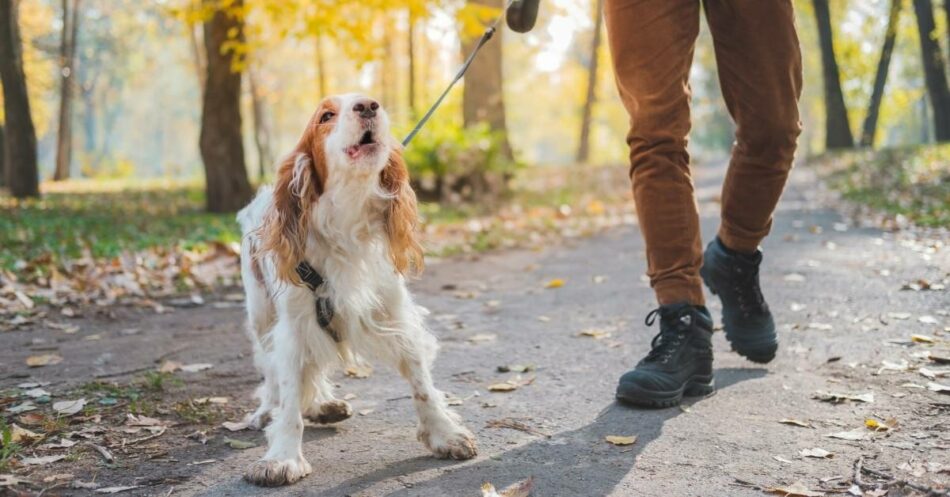
How to Help a Dog with Anxiety and Fear of Strangers
This post may include affiliate links. Please read my disclosure policy.
Pet anxiety is a topic of special concern to me. So much so that I launched Pet Anxiety Awareness Week (PAAW) back in 2017 and continue to commemorate it today as Pet Anxiety Awareness Month in honor of my beloved dog, Buck, who suffered from fear, anxiety, and stress (FAS).
Does your dog bark, lunge, or cower behind you when they meet humans or other dogs? These and a variety of other reactions can be signs of dog anxiety.
In order to help your pup feel better and have an easier time around others, and in order for you to enjoy walks and outings with less anxiety too, here are some ways to identify anxiety in dogs and then take the necessary steps toward a calmer, more peaceful time in and out of the house.
How to Know if Your Dog Has Anxiety
Anxiety can show up differently from one dog to the next. One French bulldog, Max, gets anxious when he’s introduced to new people or when he’s not leading the pack when out on a walk. Max will howl and cry in these situations, and if you’ve ever heard an upset Frenchie, you know how high-pitched that sound can be!
Pin Me!
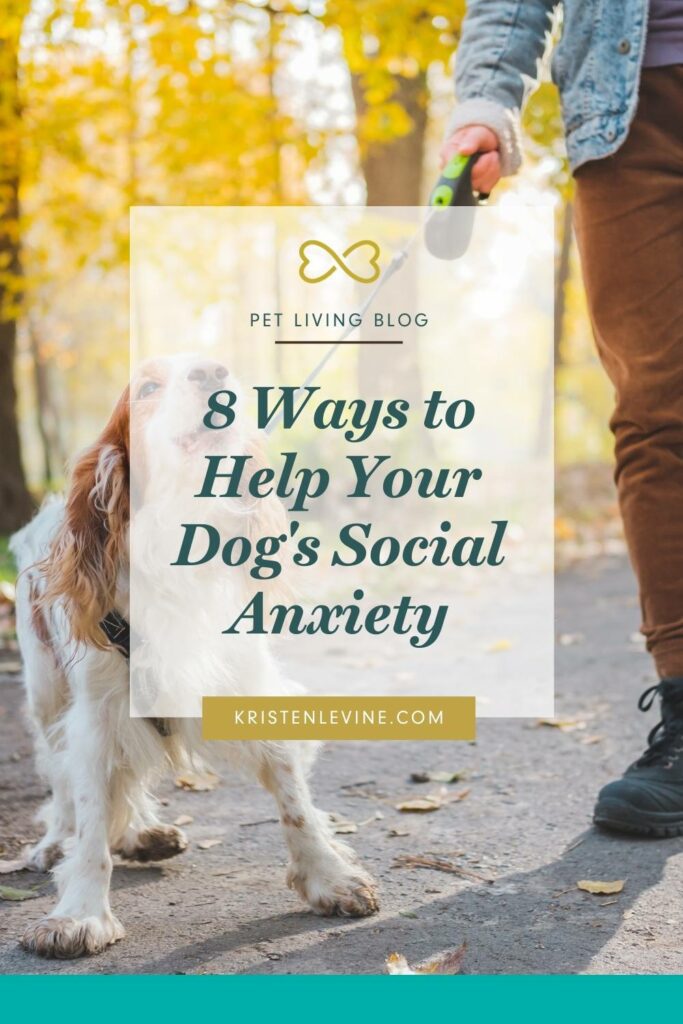
For Max, there are two primary sources of anxiety: meeting new people and leadership. The reasons for your own dog’s anxiety could be similar or wildly different. Perhaps they stem from particular events, like loud noises, travel, or visits to the vet. But they might be more social in nature. If you notice that your dog routinely shows signs of anxiety when being introduced to new animals or people, this is the likely source of your troubles.
It’s a good idea to track your anxious dog’s body language, which might include cowering, hiding, shaking, panting, drooling, pacing, peeing or pooping in the house, excessive barking or growling, and exhibiting destructive behavior or even aggression.
What Are the Different Kinds of Dog Anxiety?
There are different types of anxiety, and the reasons can vary as widely as the potential symptoms. As a first step, it’s always best to consult with your veterinarian so they can evaluate your anxious dog and rule out medical conditions that could be causing these behaviors. When and if anxiety is established as the reason for the behavior, your vet can help you work through causes and solutions.
Separation Anxiety
Separation anxiety is one of the most common forms of anxiety in dogs. It occurs when dogs become overly attached or dependent on their owners and feel distressed in their absence. Symptoms of separation anxiety may include excessive barking, destructive behavior, accidents inside the house, or even self-harm in more severe cases. This anxiety often becomes evident when pet parents make changes to their routines or when the dog is left alone for longer than usual.
Rescue or Former Shelter Anxiety
Dogs that come from shelters or have been rescued might have histories filled with uncertainty, trauma, or frequent changes in their environment. As a result, they might be particularly sensitive and can exhibit signs of anxiety. These signs can manifest as fear, aggression, or withdrawal in unfamiliar situations, or even during familiar routines.
Anxiety Caused by Illnesses or Diseases
Sometimes, a dog’s anxiety isn’t linked to their environment but rather stems from underlying health issues. Pain from an undiagnosed injury, hormonal imbalances, or neurological disorders can lead to behavioral changes and heightened anxiety. Even problems with your pup’s digestion could lead to anxiety.
Generalized Anxiety
While some dogs have specific triggers that induce anxiety, others might seem perpetually on edge, exhibiting signs of what is known as generalized anxiety. Such dogs might seem constantly wary, overreact to minor disturbances, or appear tense even in familiar environments. There may be numerous causes to this type of anxiety, from unfamiliar situations or settings, like grooming, to noise aversion, such as thunder.
Social Anxiety for Dogs
Often, social anxiety in dogs and behavior problems that can stem from it may be due to lack of socialization. Puppies and dogs need to be trained that human and animal interaction is normal, and if this doesn’t start from a young age, it can be difficult for them to unlearn other established behavior.
Additionally, social anxiety in dogs can stem from traumatic experiences. Sadly, many rescue dogs have been abused, causing them to experience fear and distrust in others no matter their age.
Older dogs might develop Cognitive Dysfunction Syndrome (CDS), which can also lead to dog anxiety. Cognitive dysfunction syndrome in senior dogs is similar to dementia or Alzheimer’s in people. If you’ve ever experienced moments of confusion, forgetfulness, or disorientation, you know how stressful this can be. And we can only imagine that our four-legged friends must experience similar fear, anxiety, and stress when it happens to them. A colleague’s dog suffered with CDS during her senior years, and at times, she wasn’t able to recognize her family and would display fearful behavior out of the blue.Additionally, as pet parents, we can cause stress for our dogs (even if we don’t mean to!). Our dogs are very intuitive and often react to how we’re feeling. If we show signs of anxiety in social situations, our dogs might pick up on that.
Dog Anxiety Prevention and Treatment
It’s important to note that it’s occasionally possible to treat dog anxiety effectively, but oftentimes, it can only be managed. Either way, when you take steps toward reducing your dog’s anxiety, you’re creating a better and less anxious life for him overall, making it a worthwhile effort no matter the precise outcome.
As already mentioned, you can help your pup live a calmer life by first talking to your veterinarian. They can help you come up with a treatment plan for your dog’s excessive anxiety, which could include medications, training, and/or the use of natural calming supplements. Here are some helpful options that I’ve leaned on time and time again for my own anxious dogs through the years:
Socialization: Ideally, you should start socializing your puppy right away (between 3 and 14 weeks) in order to avoid social anxiety and fear of strangers. This process sets your dog up to be able to enjoy interactions with others as they grow and develop.
ElleVet CBD + CBDA Oil for dogs: CBD oil can benefit generally anxious dogs. The oil interacts with your dog’s endocannabinoid system, which influences their brain and mood. If their anxiety is more situational, try giving them ElleVet’s Calm and Comfort chews before heading out into a stressful social situation.
Exposure therapy: Take small, deliberate steps to expose your dog to new people, places, and situations. For example, sitting together on your front stoop can help him get used to seeing new people from a comfortable, safe environment.
You could also ask a dog-friendly friend or neighbor to visit your house so you can introduce your dog to new people slowly and calmly. Monitor him carefully, and if you notice signs of anxiety, remove him from the situation.
Regular exercise: A tired dog is less likely to become overstimulated, so before exposing your dog to crowded areas or new people and situations, give them a great round of exercise. By the end of your session, your dog should feel calm but not exhausted, still ready for what’s to come, but in a calmer frame of mind.
Reward your dog for calm behavior: Strike a healthy balance between rewarding your dog for calm behavior (treats are great for this!) and comforting him when he becomes anxious, as this can reinforce the behavior.
Pheromone collars: I’m a fan of pheromone collars, which can be helpful as they emit comforting pheromones that can help your anxious dog feel at ease. My favorite is the Adaptil On-The-Go Calming Collar.
Supplements: All dogs should be taking a supplement appropriate for their life stage and brain health. I’ve been using ALL-IN for my dog Chilly for years now, and it helps with dog anxiety as well as cognition as he ages (plus a ton of other health-related benefits!).
- Made in the USA in an FDA registered facility with strict quality guidelines
- Contains glucosamine, chondroitin, MSM, calcium, and vitamin D3 to help support a dog's bones and joints, prebiotics and probiotics for digestion and gut health, and collagen, biotin, omega-3 fish oils, and vitamin E for a healthy skin and coat
- Made with natural ingredients and no artificial fillers or colors
Look inward: Don’t forget to think about yourself in all this. As a pet parent, you need to make sure you feel good about going out with your dog into new social situations. If it helps, bring a family member or friend with you so you feel more at ease. If you feel calm, your dog is more likely to feel calm.
When Is Professional Help Necessary?
Your veterinarian might choose to refer you to a Certified Veterinary Behaviorist who can help you narrow down the triggers of your anxious dog, come up with ways to further help him feel less anxious, and create a plan for how to start working toward a calmer frame of mind. Some dogs may need medication to maintain quality of life, and your veterinarian will be able to make that call.
Calmer Days Are Ahead
There’s no doubt all of us pet parents have experienced our own anxieties in life, ranging from any number of issues and situations. We know the value in finding ways to soothe ourselves, heal, and work toward calmer futures. Of course, we want that same thing for our beloved furry friends, and using the tips, tricks, and products above will help you get started.
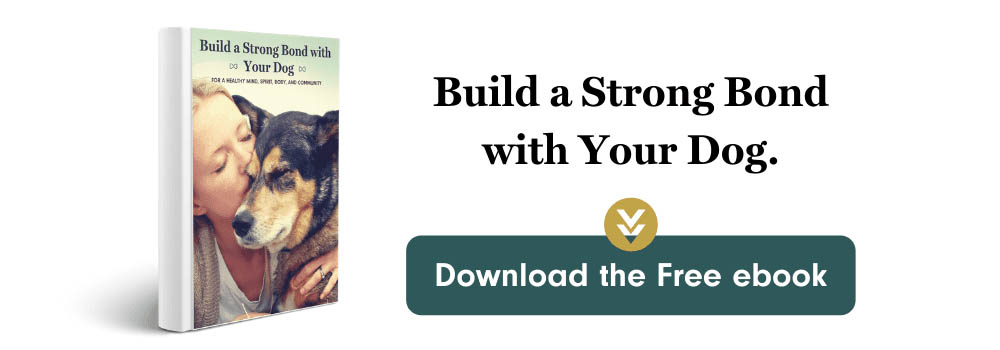





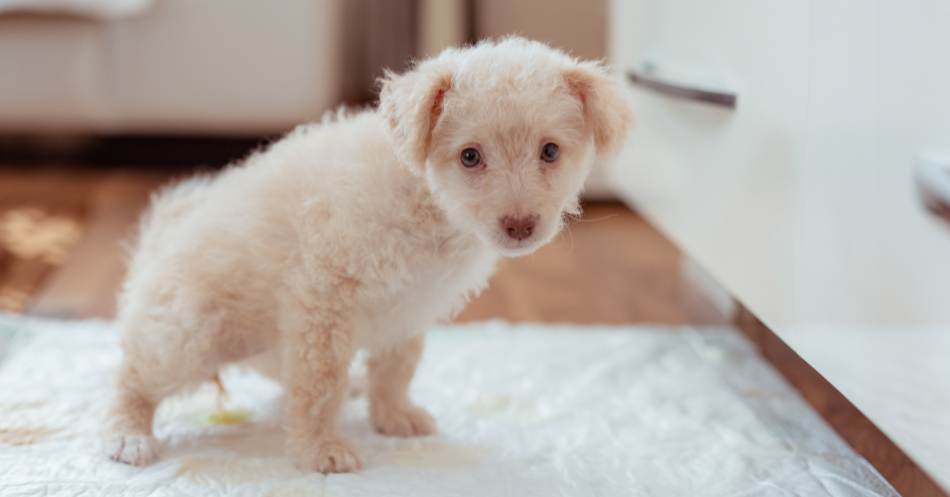

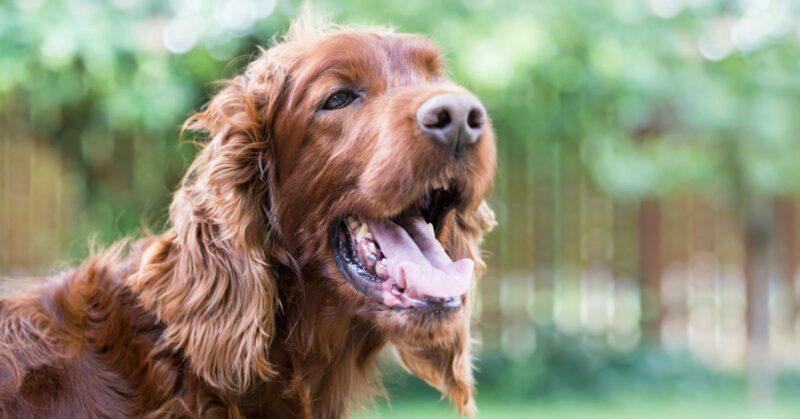
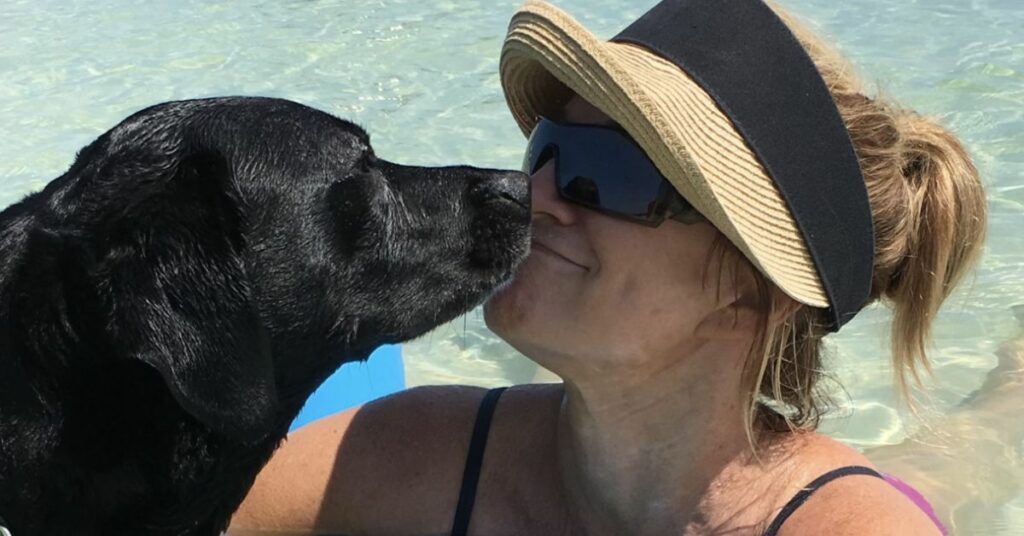
Comments (0)